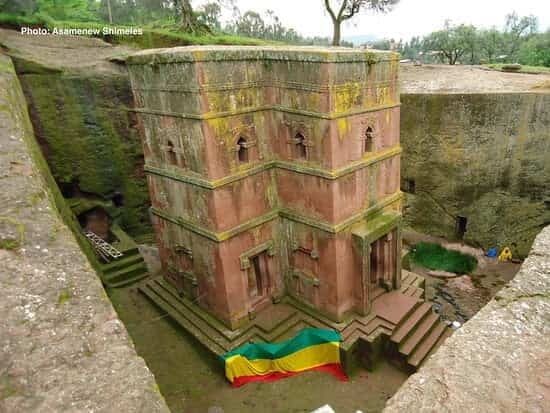MILDRED EUROPA TAYLOR
Head of Content
 Stacked in the heart of Lalibela, a town in northern Ethiopia previously known as Roha, are 11 spectacular medieval churches that were carved from a single volcanic rock some 900 years ago. The magnificent medieval structures have turned the mountain town into a major attraction site over the years for local and international visitors and pilgrims, especially worshipers of the Ethiopian Orthodox Church.
Stacked in the heart of Lalibela, a town in northern Ethiopia previously known as Roha, are 11 spectacular medieval churches that were carved from a single volcanic rock some 900 years ago. The magnificent medieval structures have turned the mountain town into a major attraction site over the years for local and international visitors and pilgrims, especially worshipers of the Ethiopian Orthodox Church.
All the churches at the site are elaborately carved and are underground, connected by tunnels and surrounded by rock-hewn trenches. These rock-hewn churches were declared a UNESCO World Heritage Site in 1978. And the construction of these incredible 12th-century churches is all thanks to Ethiopian King Gebre Meskel Lalibela (r. ca. 1181–1221), who, according to his hagiography, carved the churches over a period of 24 years with the assistance of angels. The rock-hewn churches were built in Roha (present-day town Lalibela) and later renamed in his honor.
To date, the complex remains a wonder to many and so was the life of King Lalibela (others refer to him as emperor). History says when he was born, a swarm of bees surrounded him. His mother regarded this as a sign that he would be a long and prosperous king. And so it was, as his reign as king of the Zagwe dynasty for forty years was largely successful.

While at Tigray, he got married to Mesqel Kibra or “glory of the cross” and then made a pilgrimage to Jerusalem or the Holy Land, which was then under the Roman Catholic rule. During this same period, his brother Harbay sent two missions to Rome, believed to be in response to the proposal of an alliance which Pope Alexander III (reigned 1159-81) had sent to the Ethiopian emperor in 1177, a report noted.
Lalibela, getting to know what his brother was doing, came back to Roha (now Lalibela) in Ethiopia with his supporters and then forced his brother Harbay to abdicate the throne. The Ethiopian clergy, who were then opposed to Harbay’s relationship with the Catholic Rome, helped Lalibela assume power. Once on the throne as Emperor of Ethiopia, Lalibela took the name Gebre Meskal or “servant of the cross” and became a ruler loved by all as he “put into practice his Christian ideals of voluntary poverty and charity towards all men, including his enemies.”
Lalibela however had to deal with “nobles in Shewa and Tigray” as well as some Muslims who wanted to encroach on his land. All in all, it is widely agreed that his biggest achievement is in the 11 monolithic churches he built in his capital city (present-day Lalibela), which were modeled after Jerusalem. According to Belay Habetamu, pope of one of the 11 rock-hewn churches, Lalibela wanted to build a second “Jerusalem” in present-day Lalibela since the road to Jerusalem at that time was not safe.
“Jesus spoke to King Lalibela, ordering him to build churches by carving rocks,” Habetamu said. The construction of the complex was inspired by Noah’s arc, according to sources, and was built underground “for protection from enemies.”
Lalibela himself was made a saint by the Ethiopian Orthodox Church after his death. His own tomb is in Biet Golgotha, one of the churches.
